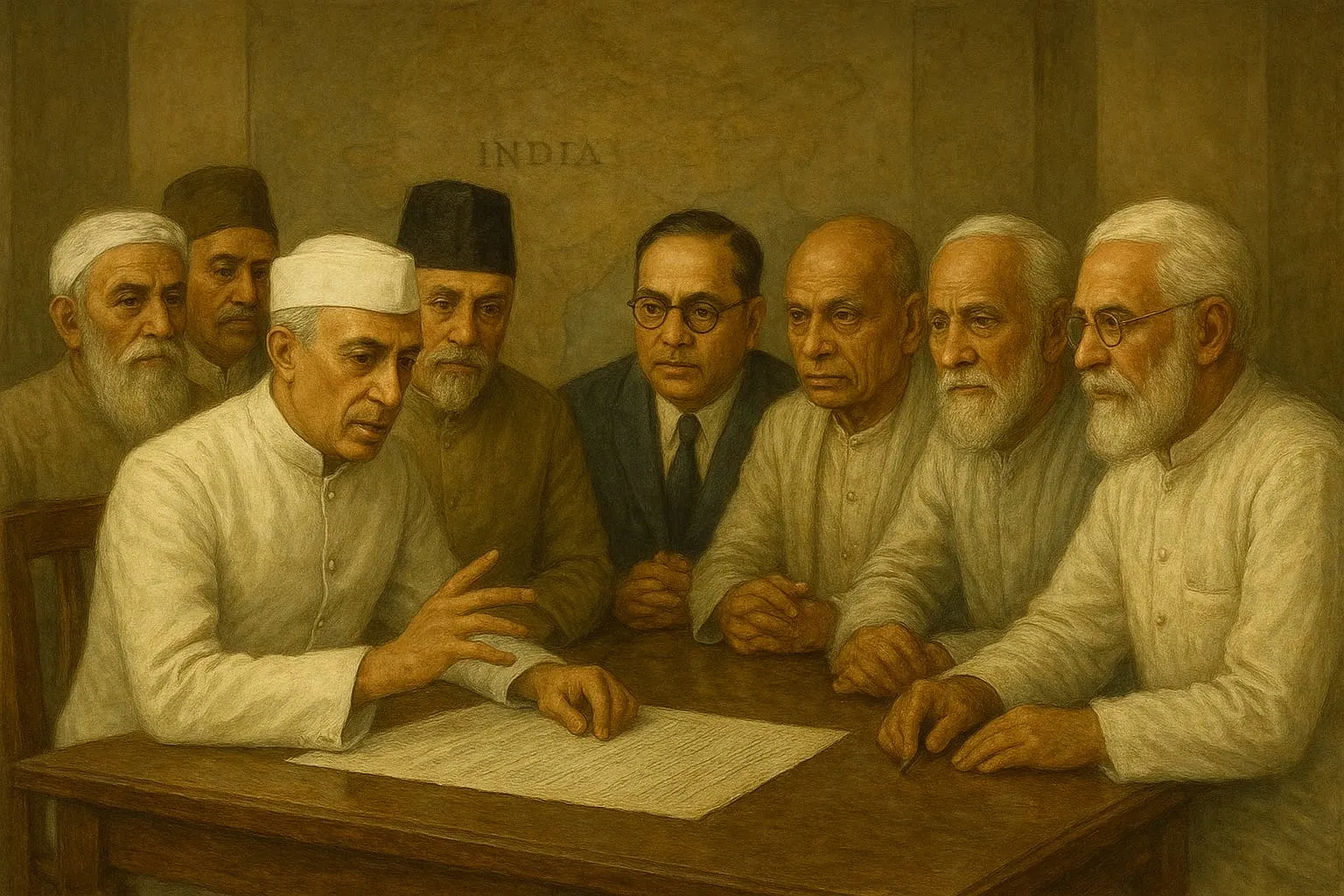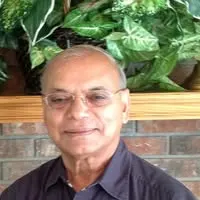| Title | NEHRU AND THE SECULAR STATE OF INDIA |
|---|---|
| Author | Rev. Victor Z. Narivelil |
| Category | Studies about Jawaharlal Nehru |
| Number of Pages | 87 |
| Language | English |
| File Size | 5.31 MB |
| File Type | |
| Country of Publication | US |
| Main Topics | Introduction and Biographical Notes on Nehru, Attitude Towards Religion, The Secular Ideal, Secularism in Practice, Evaluation and Conclusion |
Summary Note of this Document
This Master's thesis, presented to Loyola University, looks into the major role played by Jawaharlal Nehru in the establishment and promotion of secularism in post-independent India. The work comprises 87 pages and highlights Nehru's contributions in the pluralistic religious, social, and political landscape where Hinduism and Islam predominate, and communal problems have at times posed major threats. Drawing mainly from the writings and speeches of Nehru, together with secondary literature like Donald E. Smith's Nehru and Democracy, the author argues that the establishment of a secular ideal with its practical implementation was an absolute necessity for national integration and the further development of democracy. The thesis is divided into four chapters, prefaced with a statement outlining the purpose of the work, viz., to throw some light on Nehru's ideals concerning secularism, the operationalization of these ideals within Indian realities, and finally an assessment of his policies in those contexts.
The Preface and Introduction (Chapter I)
In the Preface, Nehru is held forth as one of the most highly respected leaders who led the country for 17 years after independence. Among his great achievements, one stands: the establishment of a nation where men live in harmony irrespective of race, religion, color, or caste. The Preface goes on to say that this thesis is about Nehru's views with regard to India's socio-religious challenges and will attempt to contrast these views with the very limited studies done so far—a factual study by Smith, for example.
Chapter I gives biographical notes on Nehru (born in 1889 in Allahabad, in a prosperous Kashmiri Brahmin family; educated in England and influenced by Western concepts of liberalism and Fabian socialism and Gandhi) and his attitude toward religion. Nehru considered religion more of a private affair and criticized dogmatism and sectarianism in it, which, to him, were obstacles in the path of progress. Thus, blending the codified traditions of East with rationalism of the West, he suffered from the malaise of cultural "rootlessness," yet he was committed to something larger called Indian unity. The chapter begins in the year 1947 with India's independence, partition-related violence followed by Nehru's famous speech on "tryst with destiny," wherein was spelled out not just some strong need for secularism but an equally strong need to do away with communalism.
The Secular Ideal (Chapter II)
This chapter described Nehru's secular vision—a Western ideal imported into India—where the state is neutral toward religions and extends such secularism to the social plane, providing equal rights to all citizens regardless of religion or caste. In contrast to Nehru, who linked secularism with democracy and called a religious or theocratic state—which is medieval in its very nature—an antithesis to modern equality, he condemned communalism in politics as narrow-minded, divisive, fear-inspired or reactionary, being rooted in Hindu-Muslim rivalries that culminated in partition. Nehru opposed separate electorates and parties such as the Muslim League, calling them anti-national.
Compared with Gandhi, differences emerge: For Gandhi, a firm Hindu, secularism came from a religious equality standpoint (all faiths being branches of one tree); hence, he was against partition, calling it an "untruth." For Nehru, more agnostic and pragmatic, the principal concern was democratic mechanisms to protect minorities from exploitation without granting preferential status to any one group. The chapter ends saying that Nehru's ideal had to be superordinate to prevailing laws, social attitudes, and reform measures in order to counter those inequalities engendered by, for example, caste or personal law.
Secularism in Practice (Chapter III)
The next chapter charts the course for historical scenarios and Nehru's policies. Ancient and medieval India was tolerant (a Hindu king might help out a rival sect, for instance, Akbar's notion of syncretism) but had no institutional separation of church and state, dharma or Islamic polity being in force. British rule purported to be neutral for commercial reasons, but in practice it paid for endowments to temples and mosques, taxed pilgrims, set up the Church of England, but divided Hindus and Muslims via communal awards.
Post-independence, the Indian constitution (though "secular" is never used in the text) enshrines secularism in the spirit of provisions guaranteeing religious freedom (Arts. 25-30), equality irrespective of religion (Arts. 14-16, 325), and prohibition on State funding/sharing of funds for religion (Arts. 27-28). Nehru abolished separate electorates (Art. 325) on the ground that those electorates isolated minorities, counteracted their own self-reliance on issues, switched attention from socio-economic problems, and opened for negation of democracy. He pressed for reforms of Hindu personal laws (passed as separate bills, the Hindu Marriage Act, Hindu Inheritance Act, etc. from 1955-56) as a first step to enacting a uniform civil code (Art. 44), heeding opposition and delayed against opposition for fear of alienating Muslims. Concerning caste, the Constitution proscribed untouchability (Art. 17) and established positive measures in its favor (Art. 46), while reservations were provided for in employment and education (Art. 15(4) amend.). Nehru viewed these measures as temporary assistance for less-privileged groups, trying to take precedence of equality over strict individualism.

|
Evaluation and Conclusion (Chapter IV)
The concluding chapter criticizes Nehru's conception of secularism as a contemporary version of the American graduated-type separation (neutrality without hostility), shaped by Nehru's humanism and anti-dogmatism. Nehru's sincerity came forth after the partition while rejecting expedient Hindu nationalism and instead burdening himself to engender trust in the minorities. He laid down the constitutional groundwork, quelled communalism, moved Hindu law reforms ahead, and uplifted castes to a glorious past of twenty years.
The hurdles remain, though—uniform civil code could not move ahead owing to the sensitivities of the Muslims; aids for caste could even further entrench caste division, religious discrimination (e.g., converted Harijans losing benefits), and negate individual equality. Nehru's pragmatic compromises, some made two steps forward, one step backward (e.g., delaying the implementation of reforms), were wise yet paradoxical. So, it is the author's firm conviction that Nehru is an indispensable force, the rejection of whom would mean the rejection of Gandhi as well, which is entirely outside the realm of possibility. Yet without Nehru's unifying charisma, the power tug of political interests and communalist forces could one day shake the very foundation on which secularism is said to stand in India today.
Nehru is thus presented in this thesis as a man full of idealism while in practice pragmatic in marking the course for the future of Indian secularism, an unsolved problem area of communalism, personal law, and caste constituting his legacy. The humanistic outlook is in turn projected as the fundamental pillar of India's democratic stability by this work through a blend of historical analysis and policy evaluation.
